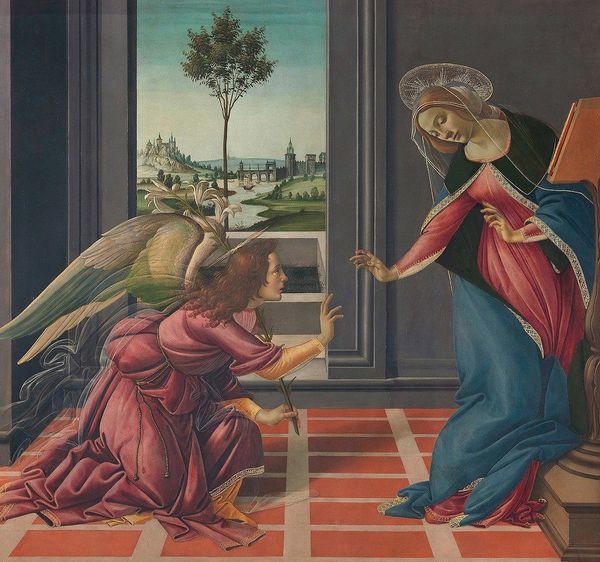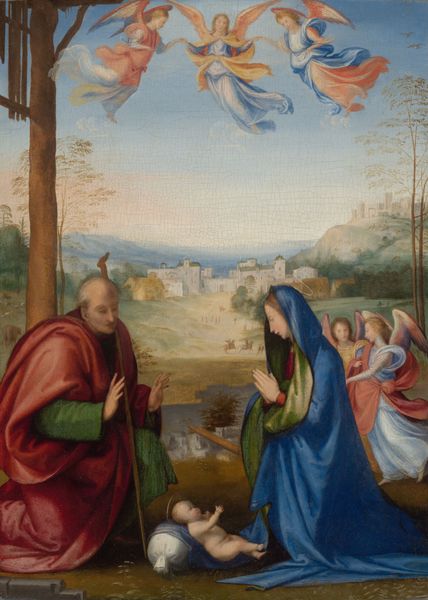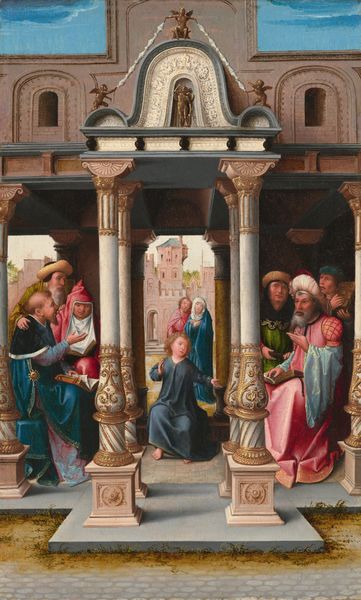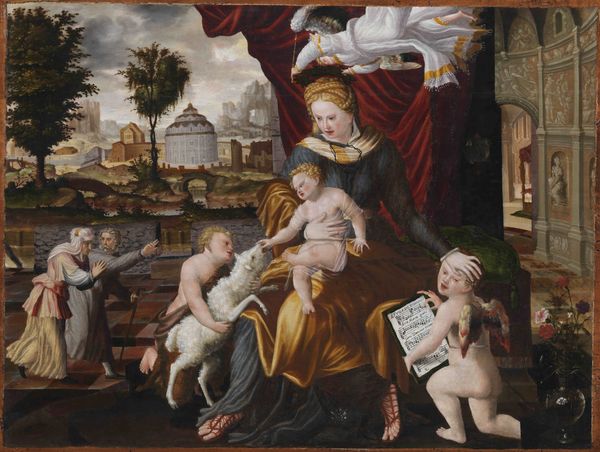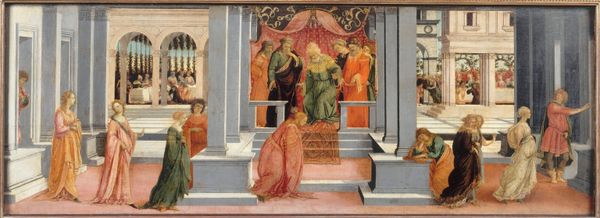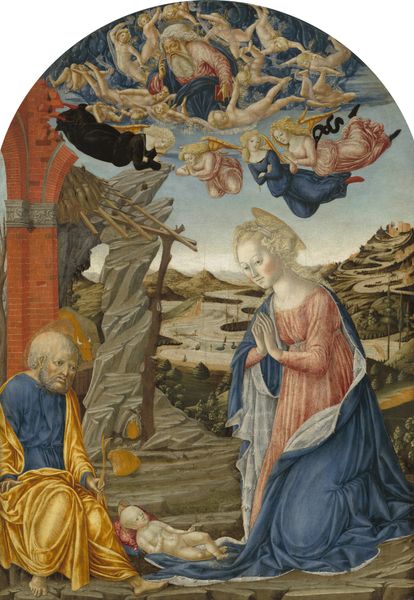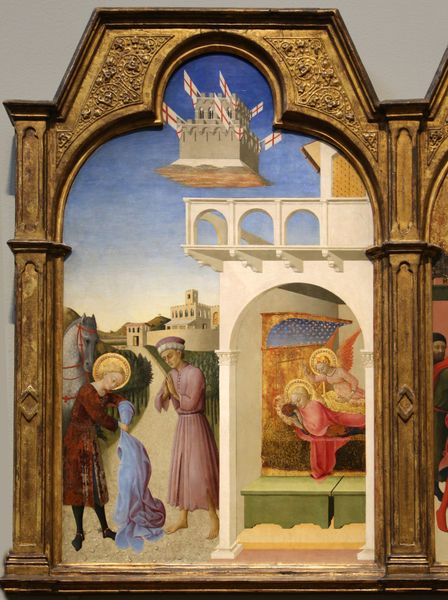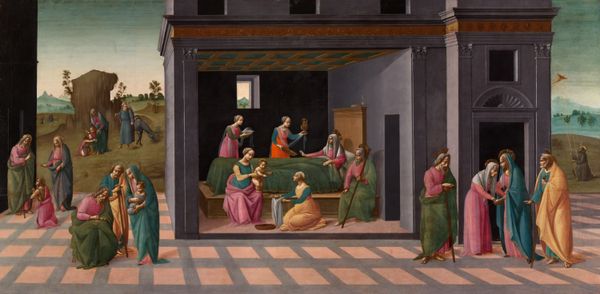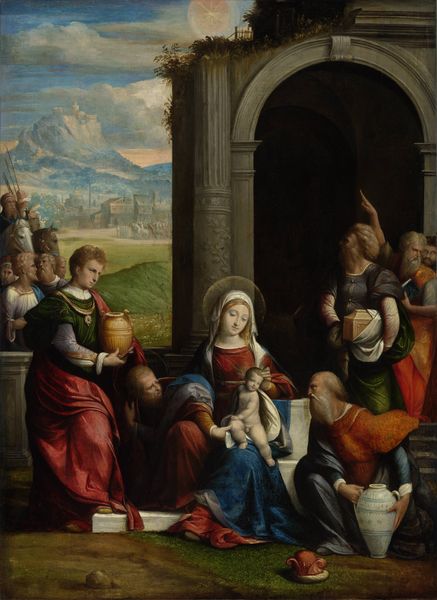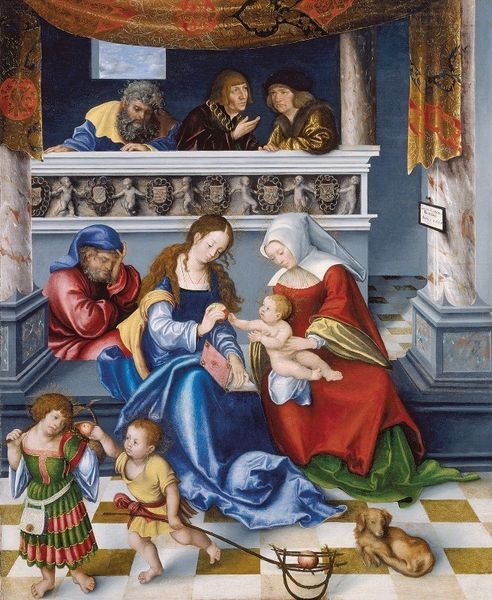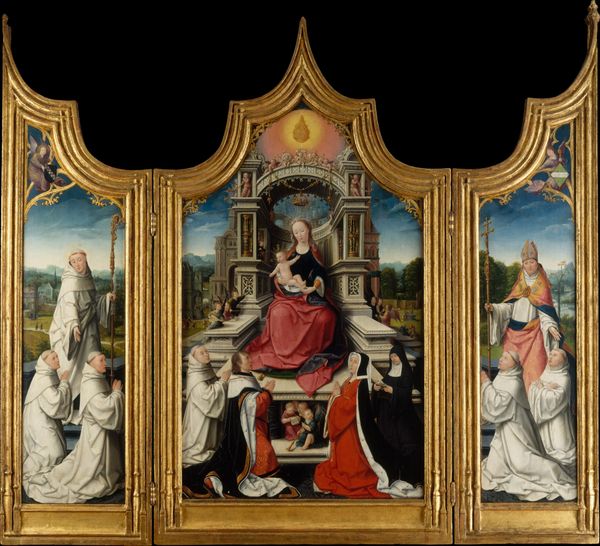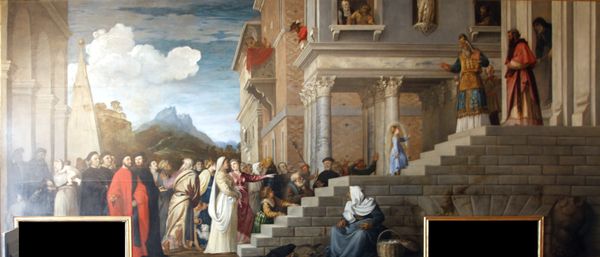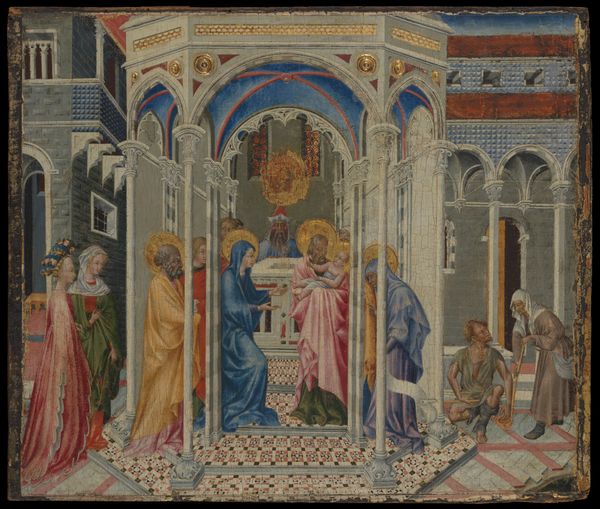
painting, oil-paint
#
painting
#
oil-paint
#
mannerism
#
figuration
#
11_renaissance
#
history-painting
Dimensions: 22 3/4 x 29 1/2 in. (57.79 x 74.93 cm) (canvas)
Copyright: Public Domain
Editor: Here we have Girolamo da Santacroce's oil painting, "The Annunciation," from around 1540. I'm struck by how theatrical the space is, almost like a stage set. What do you see in this piece? Curator: Indeed, it is quite the production, isn't it? Look at how Santacroce orchestrates the divine narrative using symbols readily understood by his contemporary viewers. Consider the dove, representing the Holy Spirit, descending towards Mary – a visual shorthand instantly recognizable. But more than just recognizing the scene, what feelings did such images inspire? Editor: Well, seeing the infant Jesus floating there…it’s a bit unsettling. It’s such a direct visual representation. Curator: Precisely! This directness, however jarring to our modern sensibilities, served a purpose. Images weren't merely decorative; they were mnemonic devices, tools for meditation. The placement of God the Father in the clouds recalls the established hieratic tradition but placed in relation with a host of Angels in swirling clouds signals not only God's power, but heaven itself descending upon earth, making that moment a powerful and awesome symbol for Christian belief. The angel is a symbol itself, carrying lillies, signaling both royalty and peace. What emotional weight does this carry when contemplating religious figures? Editor: That makes a lot of sense. It was a different way of engaging with the story. So each element really focuses the viewer on the moment of the divine intersecting the mundane. I hadn’t considered it that way, but the emotional weight it gives to the annunciation feels more present now. Curator: Absolutely. These symbols aren't just static representations, they're invitations to an emotional and spiritual encounter, which is essential for icons of the period and tradition. It served as an enduring form of teaching, experience and devotion.
Comments
minneapolisinstituteofart almost 2 years ago
⋮
Sent by God, the Christ Child floats in the air toward the Virgin Mary—who crosses her arms in acceptance—under the dove of the Holy Spirit. His incarnation in Mary’s womb is foretold by the archangel Gabriel, who has just entered on the left. Three reliefs decorate the walls: the creation of Eve; the Fall, when Adam and Eve disobey God by eating an apple from the Tree of Knowledge of Good and Evil; and their subsequent expulsion from paradise. In fact, the Virgin Mary here stands as a “New Eve,” the Savior in her sinless womb, who has come to redeem humanity from Adam and Eve’s sin.
Join the conversation
Join millions of artists and users on Artera today and experience the ultimate creative platform.
